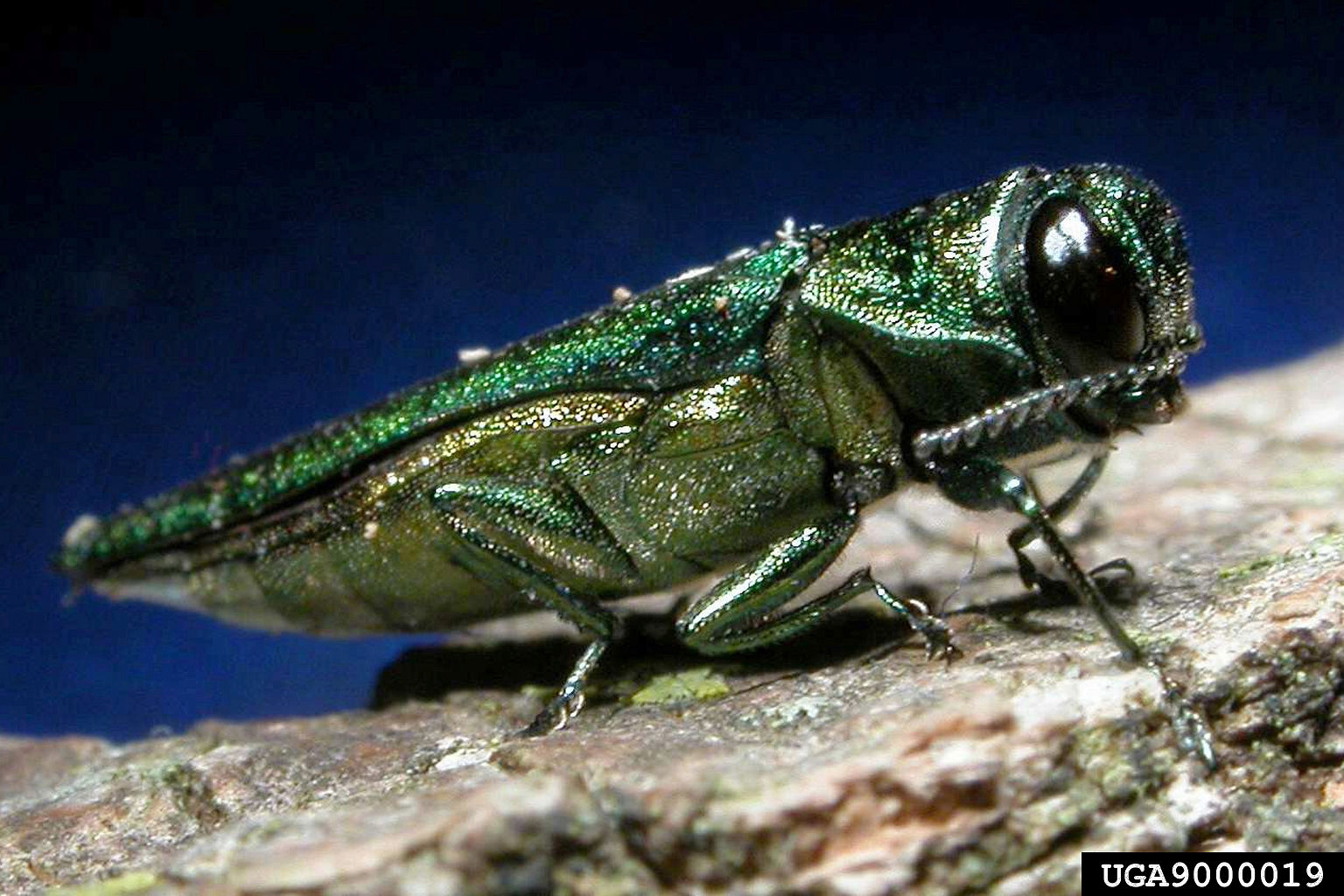April is the time to be checking your ash trees for signs of the emerald ash borer, the tiny metallic green beetle blamed for the deaths of millions of ash trees in the United States, said Jon Barry, extension forester for the University of Arkansas System Division of Agriculture.
The invasive insect from Asia “was first found in southwest Arkansas in 2014, and we have been finding additional infestations each year,” Barry said recently. “We know that we don’t know where all the infestations are, so we need your help pinpointing where they are so we can recommend treatments to you and your neighbors.”
The Arkansas State Plant Board recently approved a statewide quarantine for ash items.
Regulated articles can be moved within the state but cannot move outside of the state without complying with the federal emerald ash borer quarantine regulations.
The quarantine covers firewood of all hardwood species, and the following ash items: nursery stock; green lumber with bark attached; other material living, dead, cut or fallen including logs, pulpwood, stumps, roots, branches, mulch and composted/un-composted chips sized 1 inch or greater. Firewood is the only quarantined item that relates to all hardwood; all other quarantined items are relative to ash, only. Quarantined items can move freely within Arkansas.
Barry said that as your ash trees begin to leaf out, “look for evidence that branches in the crown of the tree have died or are dying. Those are usually the first visible symptoms of an emerald ash borer infestation.
“You may also notice sprouts from the base of the tree or increased woodpecker activity,” he said. “If the bark on the tree is loosening, peel some of it back. Insect galleries under the bark are another sign of an emerald ash borer infestation.”
Barry said if any of these symptoms appear in your ash trees, please contact your county extension agent immediately. Find contact information for your county office at https://uaex.edu/counties/default.aspx.
“It may be possible to save your ash tree if the damage is not too severe,” he said
Please help us find the emerald ash borer. For more information visit https://www.uaex.edu/environment-nature/ar-invasives/invasive-insects/emerald-ash-borer.aspx.

